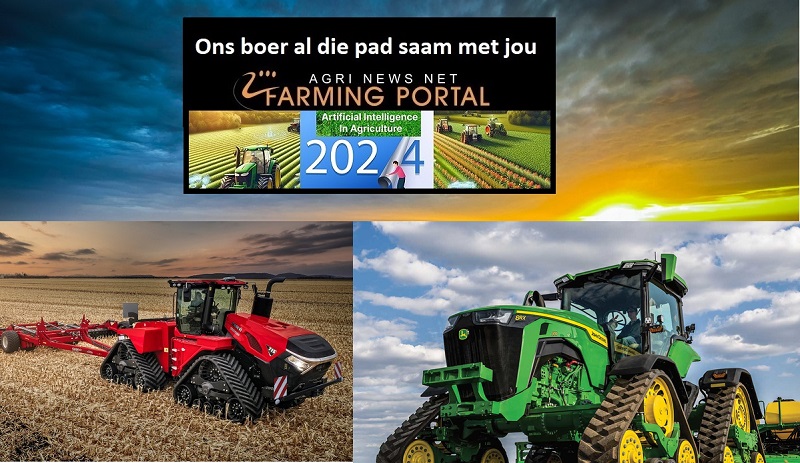TOM ROGERS is an almond farmer in Madera County, in California’s Central Valley. Almonds are delicious and nutritious. They are also lucrative. Californian farmers, who between them grow 80% of the world’s supply of these nuts, earn $11 billion from doing so. But almonds are thirsty. A calculation by a pair of Dutch researchers six years ago suggested that growing a single one of them consumes around a gallon of water. This is merely an American gallon of 3.8 litres, not an imperial one of 4.5 litres, but it is still a tidy amount of H2O. And water has to be paid for.
Technology, however, has come to Mr Rogers’s aid. His farm is wired up like a lab rat. Or, to be more accurate, it is wirelessed up. Moisture sensors planted throughout the nut groves keep track of what is going on in the soil. They send their results to a computer in the cloud (the network of servers that does an increasing amount of the world’s heavy-duty computing) to be crunched. The results are passed back to the farm’s irrigation system—a grid of drip tapes (hoses with holes punched in them) that are filled by pumps.
The system resembles the hydroponics used to grow vegetables in greenhouses. Every half-hour a carefully calibrated pulse of water based on the cloud’s calculations, and mixed with an appropriate dose of fertiliser if scheduled, is pushed through the tapes, delivering a precise sprinkling to each tree. The pulses alternate between one side of the tree trunk and the other, which experience has shown encourages water uptake. Before this system was in place, Mr Rogers would have irrigated his farm about once a week. With the new little-but-often technique, he uses 20% less water than he used to. That both saves money and brings kudos, for California has suffered a four-year-long drought and there is social and political, as well as financial, pressure to conserve water.
Mr Rogers’s farm, and similar ones that grow other high-value but thirsty crops like pistachios, walnuts and grapes, are at the leading edge of this type of precision agriculture, known as “smart farming”. But it is not only fruit and nut farmers who benefit from being precise. So-called row crops—the maize and soyabeans that cover much of America’s Midwest—are being teched up, too. Sowing, watering, fertilising and harvesting are all computer-controlled. Even the soil they grow in is monitored to within an inch of its life.
People will want to eat better than they do now
Farms, then, are becoming more like factories: tightly controlled operations for turning out reliable products, immune as far as possible from the vagaries of nature. Thanks to better understanding of DNA, the plants and animals raised on a farm are also tightly controlled. Precise genetic manipulation, known as “genome editing”, makes it possible to change a crop or stock animal’s genome down to the level of a single genetic “letter”. This technology, it is hoped, will be more acceptable to consumers than the shifting of whole genes between species that underpinned early genetic engineering, because it simply imitates the process of mutation on which crop breeding has always depended, but in a far more controllable way.
Understanding a crop’s DNA sequence also means that breeding itself can be made more precise. You do not need to grow a plant to maturity to find out whether it will have the characteristics you want. A quick look at its genome beforehand will tell you.
Such technological changes, in hardware, software and “liveware”, are reaching beyond field, orchard and byre. Fish farming will also get a boost from them. And indoor horticulture, already the most controlled and precise type of agriculture, is about to become yet more so.
In the short run, these improvements will boost farmers’ profits, by cutting costs and increasing yields, and should also benefit consumers (meaning everyone who eats food) in the form of lower prices. In the longer run, though, they may help provide the answer to an increasingly urgent question: how can the world be fed in future without putting irreparable strain on the Earth’s soils and oceans? Between now and 2050 the planet’s population is likely to rise to 9.7 billion, from 7.3 billion now. Those people will not only need to eat, they will want to eat better than people do now, because by then most are likely to have middling incomes, and many will be well off.
The Food and Agriculture Organisation, the United Nations’ agency charged with thinking about such matters, published a report in 2009 which suggested that by 2050 agricultural production will have to rise by 70% to meet projected demand. Since most land suitable for farming is already farmed, this growth must come from higher yields. Agriculture has undergone yield-enhancing shifts in the past, including mechanisation before the second world war and the introduction of new crop varieties and agricultural chemicals in the green revolution of the 1950s and 1960s. Yet yields of important crops such as rice and wheat have now stopped rising in some intensively farmed parts of the world, a phenomenon called yield plateauing. The spread of existing best practice can no doubt bring yields elsewhere up to these plateaus. But to go beyond them will require improved technology.
This will be a challenge. Farmers are famously and sensibly sceptical of change, since the cost of getting things wrong (messing up an entire season’s harvest) is so high. Yet if precision farming and genomics play out as many hope they will, another such change is in the offing.

















